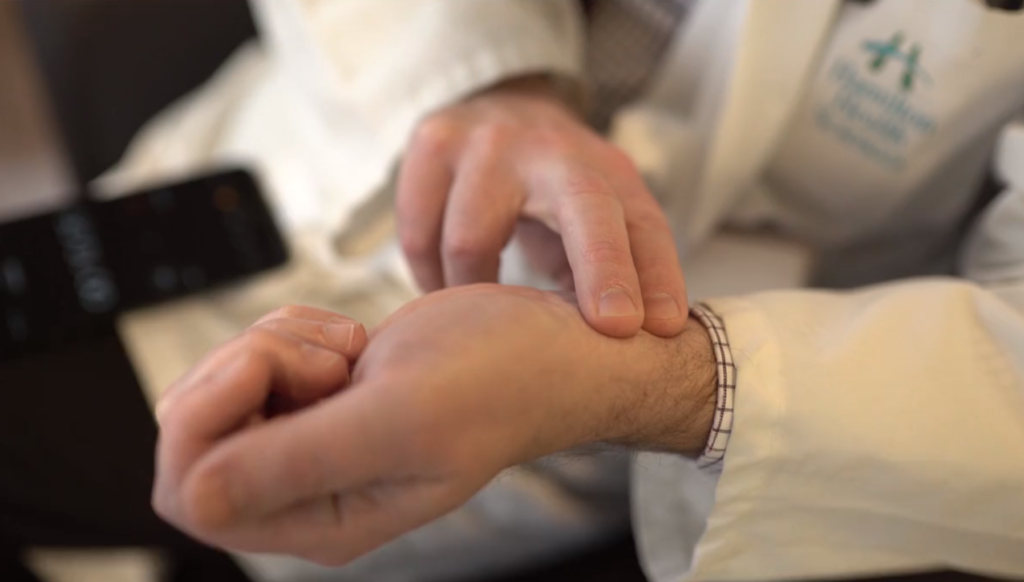
Signs and symptoms of atrial fibrillation
Chances are, you don’t pay much attention to your heart beat. The pulsing in your chest is so routine that you forget it’s even there. While you go about your day, your heart is working hard to supply blood to the rest of your body, and most of the time, you don’t give it a second thought.
But not everyone’s heartbeat is so steady. About 350,000 Canadians have a condition called Atrial fibrillation (Afib). In this condition, the electrical signals that send blood through the heart become rapid, irregular, and disorganized. This can cause the heart to pump less efficiently.
So, what causes Afib?
It can be difficult to pinpoint the cause of Afib, and in many cases, it is never known. Contributing factors include:
• High blood pressure
• Abnormal structure of the heart
• Infection or inflammation of the heart
• Diseases that damage the heart valves
• Overactive thyroid
• Blood clot in the lung
• Congenital heart disease
• Excessive use of alcohol
How to detect Afib
Some people with Afib feel just fine, and are very surprised to learn they have the condition.
On the flip side, others experience symptoms associated with Afib, but don’t actually have the condition. That’s because many symptoms of Afib also occur periodically in healthy people, or in other conditions.
If you are experiencing any of these symptoms, visit your doctor to discuss your risk.
• Irregular and fast heartbeat
• Heart palpitations or rapid thumping in your chest
• Chest discomfort, pain or pressure (if you are experiencing these or other signs of a heart attack, call 9-1-1 or visit the emergency department)
• Shortness of breath, particularly with exertion or anxiety
• Fatigue
• Dizziness, sweating or nausea
• Light-headedness or fainting
If you suspect you have Afib, checking your pulse can be a simple way to listen in on your heart beat and check for irregularities. To do this, put the index and middle fingers of your right hand on the inside of your left wrist, and feel for a pulse. Rather than counting the beats, pay attention to the rhythm and pattern.
Here’s the correct way to take your pulse.
- Sit down and relax to take a resting pulse.
- Place your first two fingers on the inside of your wrist.
- Feel for a strong pulse and count the beats for 30 seconds.
- Multiply that number by two to get beats per minute.
- If you can’t feel a pulse on your wrist, try checking under your jaw. Be careful as this makes some people lightheaded.
- If your pulse feels irregular, try checking for 60 seconds instead. The beat should be steady and regular. Irregular beats will be noticeable and out of rhythm.
- If your pulse feels irregular, talk to your healthcare provider.
Diagnosing Afib
If your pulse is irregular, your doctor may want to do some further testing to see if you have Afib. This will likely include asking a series of questions about your medical history and risk factors including:
• How long have you had symptoms? What are they like?
• Do you have other medical conditions?
• How much alcohol do you drink?
• Does anyone in your family have Afib?
• Do you have heart disease or a thyroid condition?
Your doctor will listen to your heart with a stethoscope and check your pulse. If they think further testing is required, they may send arrange for you to have an electrocardiogram (ECG) or blood tests.
Risks of Afib
One of the most common complications of Afib is stroke. People who have this condition are 3 to 5 times more likely to have a stroke than those without it. This is because the irregular heartbeat of someone with Afib can cause blood to gather and pool inside the heart. That pooled blood may form clots which could travel to the brain, causing a stroke.
Watch this quick video to learn the signs of stroke so you can act FAST if you suspect one.
Living with Afib for a long time can also put a strain on your heart. Untreated, Afib can lead to heart failure, because your heart has trouble pumping blood through your body.
Treatment
Luckily, there are a number of highly effective treatments for Afib which can be customized according to your specific needs. Most people with Afib have to take blood thinners in order to reduce their risk of stroke. There are two main types of treatment:
• Rhythm control – these treatments try to restore and maintain a regular heartbeat using medication, or if needed, controlled electric shot to the heart. In rare cases, these treatments do not work and a procedure called catheter ablation is required.
• Rate control – almost all patients with Afib will be prescribed a medication to slow the heart rate.
General health
Maintaining a healthy lifestyle is important whether or not you have Afib. If you are at risk for the condition, making healthy changes may reduce your risk of developing it.
• Eat a healthy diet and maintain a healthy weight
• Limit alcohol intake
• Do not smoke
• Reduce stress
• Remain physically active
